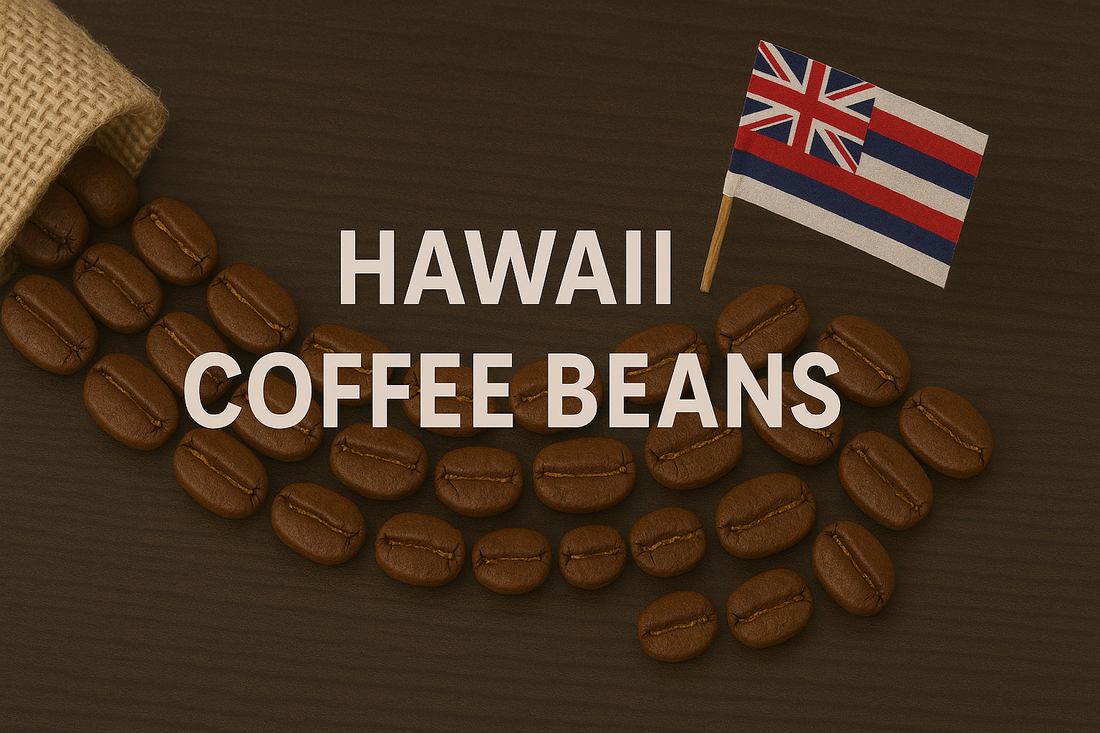
Hawaii Coffee Beans
正啟 GLOBALEYESShare this news
Hawaii is blessed with abundant sunshine, an average annual temperature around 21°C (70°F), plentiful rainfall, and fertile volcanic soils from the Mauna Loa and Hualālai volcanoes. The porous and mineral-rich volcanic soil, combined with high-altitude growing conditions (approximately 3,000 feet) and sufficient shade protection from excessive sunlight, creates ideal conditions for cultivating the renowned Kona coffee's unique flavors.

The coffee variety primarily cultivated in Hawaii is Typica. Seedlings are grafted and nurtured in nurseries for nearly a year before being transplanted into orchards. Coffee trees typically start producing cherries in their third year, reaching full production by the sixth year. Once mature, coffee cherries are washed, sorted by bean size and defect count, graded, and prepared for export.

Coffee Growing Regions
Kona Coffee
The main Kona coffee-growing region, known as the Kona Coffee Belt, is divided into northern and southern areas, encompassing towns such as Kealakekua, Keauhou, and Holualoa. Within this region, various Kona coffee producers and exporters operate. Only coffee grown on the slopes of the Hualālai and Mauna Loa volcanoes in the North and South Kona districts can legally be called "Hawaii Kona Coffee."

Puna Coffee
The Puna district had coffee cultivation as early as the mid-1800s, though it declined due to the booming sugarcane industry. Recently, coffee production has seen a revival in Puna, with over 125 acres currently under cultivation. Coffee from Puna typically features a full-bodied, rich flavor with nutty and chocolate notes.

Hamakua Coffee
The tropical slopes of Mauna Loa along the Hamakua Coast, once primarily known for sugarcane cultivation, are gradually transforming into coffee-producing areas. Most coffee farms here are small (averaging 5-7 acres), with beans harvested by hand. Hamakua coffees have robust flavors and a chocolatey, smooth mouthfeel.

Coffee Varieties in Hawaii
The most popular coffee variety grown in Hawaii is "Guatemalan," also known as "Kona Typica." Hermann Widemann introduced this variety from Guatemala to Hawaii in 1892. He planted an 800-tree orchard in Hamakua, comparing 400 trees of the Guatemalan variety with another 400 trees of an older variety known as "Kanaka Koppe." By 1895, the Guatemalan variety had clearly shown superior results. During the 1960s, some Kona growers experimented with another Latin American variety, "Red Caturra," but it has rarely been cultivated since. Thus, "Guatemalan" or "Kona Typica" remains the primary variety cultivated throughout the Hawaiian coffee industry today.

Grading of Hawaii Kona Coffee
Only coffee grown on the slopes of Hualālai and Mauna Loa volcanoes in North and South Kona districts can officially be labeled as "Kona Coffee." According to law, Kona coffee is sold either as a blend containing at least 10% Kona beans or as "100% Kona Coffee."
Hawaiian Kona coffee beans are initially categorized into two main types, Type 1 and Type 2, which are further divided into various grades based on bean shape and defect count, as listed below:
Type 1 (Flat Beans)
- Kona Extra Fancy: fewer than 10 defective beans.
- Kona Fancy: fewer than 16 defective beans.
- Kona Number One: fewer than 20 defective beans.
Type 2 (Peaberry Beans)
- Kona Number One Peaberry: fewer than 20 defective beans.
- Kona Prime Peaberry: defective beans constitute less than 25% by weight.

Flavor Profile of Hawaii Kona Coffee
Hawaii Kona coffee is celebrated for its subtle sweetness reminiscent of honey and apricots, complemented by a buttery, creamy mouthfeel and a lingering, sweet aftertaste. It offers mild acidity coupled with bright citrus notes.

Hawaii Kona coffee (Hawaii Kona) is renowned globally and stands alongside Jamaica Blue Mountain as one of the world's most prestigious coffees. While Blue Mountain coffee evokes the image of a refined, composed gentleman, Kona coffee is often likened to an elegant, thoughtful lady—gentle, smooth, rich yet delicate, fragrant yet balanced, never overly acidic or aggressively aromatic. Every sip of Kona coffee is perfectly balanced and graceful, making it a favorite at White House state banquets, further underscoring its exceptional quality and prestigious status.

